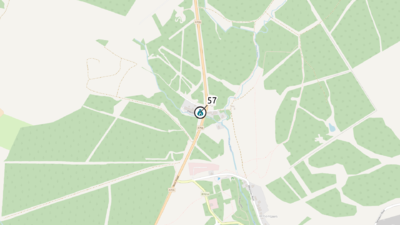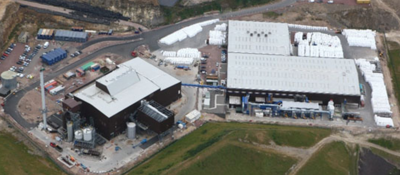Levenseat EfW
The Levenseat facility comprises a MRF and the adjacent Levenseat EfW facility which is based upon Gasification technology. Levenseat EfW Phase 2 is the second phase of the EfW development which is adjacent to the current facility. The capacity is reported as 42 tonnes per hour through the MRF (or around 215,000 tonnes per annum) producing RDF for the adjacent EfW plant of around 100,000 tonnes per annum[1].
| Error: no local variable "site" has been set. Error: no local variable "status" has been set. | |
 See Residual EfW → page for a larger UK Wide map. | |
| Waste Licence | Error: no local variable "epr" has been set. |
| Operator | [[Error: no local variable "operator" has been set.]] |
| Region | [[:Category:Error: no local variable "region" has been set.|Error: no local variable "region" has been set.]] |
| Operational Capacity | Error: no local variable "cap" has been set.ktpa |
| Is site R1? | Error: no local variable "r1" has been set. |
| When was R1 Granted? | Error: no local variable "r1date" has been set. |
| What was the R1 value | Error: no local variable "r1value" has been set. |
| Electrical Capacity | Error: no local variable "mwe" has been set.MWe |
| Number of Lines | Error: no local variable "line" has been set. |
| Number of Turbines | Error: no local variable "turbine" has been set. |
| CHP | Error: no local variable "chp" has been set. |
| Technology Approach | Error: no local variable "techtype" has been set. |
| Funding Type | [[Error: no local variable "funding" has been set.]] |
Operators Annual Report
Input Data
| Year | HH | C&I | Clin | RDF | Total |
|---|
Output Data
| Year | IBA | IBA %ge of Tot IN | APC | APC %ge of Tot IN |
|---|

Summary
The Levenseat facility comprises a MRF and the adjacent Levenseat EfW facility which is based upon Gasification technology. Levenseat EfW Phase 2 is the second phase of the EfW development which is adjacent to the current facility. The capacity is reported as 42 tonnes per hour through the MRF (or around 215,000 tonnes per annum) producing RDF for the adjacent EfW plant of around 100,000 tonnes per annum[2].
Levenseat Renewable Energy Limited is an offshoot of Levenseat Ltd and had investment from Green Investment Bank (subsequently acquired by Bioenergy Infrastrucutre Group[3]), Foresight Group and Zouk Capital and debt from Investec Bank when it reached financial close in March 2015 for GBP£111m[4][5].
Technology
The plant is a single line, fluidised bed Gasification plant by Outotec, generating super-heated steam[6] to drive a turbine to generate electricity to the grid. Levenseat EfW Phase 2 received planning consent in late 2020 to vary its consent and approach to a conventional combustion technology and an increase to its capacity to 135MW thermal[7].
Construction
The plant commenced construction in 2015 under a turnkey EPC contract with MW High Tech Projects UK. After an extended commissioning period the EfW plant was reported as achieving take over in late November 2020[8].
Waste Input
The plant is designed to run on RDF manufactured from residual Household Waste and Commercial Waste, with preparation on site in the adjacent, larger scale MRF.
Local Authority Users
Local Authority Data
The table below lists those local authorities who have recorded their tonnage on WasteDataFlow as sending their Waste to this site (either directly or via a transfer station) for the most recent financial year, data was updated on Error: no local variable "updated" has been set.. The tonnage received cannot be directly compared with the stated historical tonnage received and recorded in the EA statistics as these are recorded on a calendar year basis (i.e. January 2018 to December 2018). The total Local Authority waste received by the plant in the period was: 0t
A 'zero return' or a below expected return, when compared to the EA Data below indicates that either:
- no local authority tonnage was recorded/no tonnage was sent to the site in the period (but has been listed as it may have previously received tonnage from a local authority) or
- a result of the plant being recently commissioned and actually having received no tonnage or
- a lower than expected tonnage maybe a result of a local authority splitting their tonnage over multiple sites, having less tonnage to send than might be anticipated or
- it may be a new plant being in 'ramp up' towards full capacity after construction or
- may be a result of plant shut down and subsequent re-start in a year or
- the local authority may not have correctly entered the site's details on WasteDataFlow
| Authority | Tonnage |
|---|
